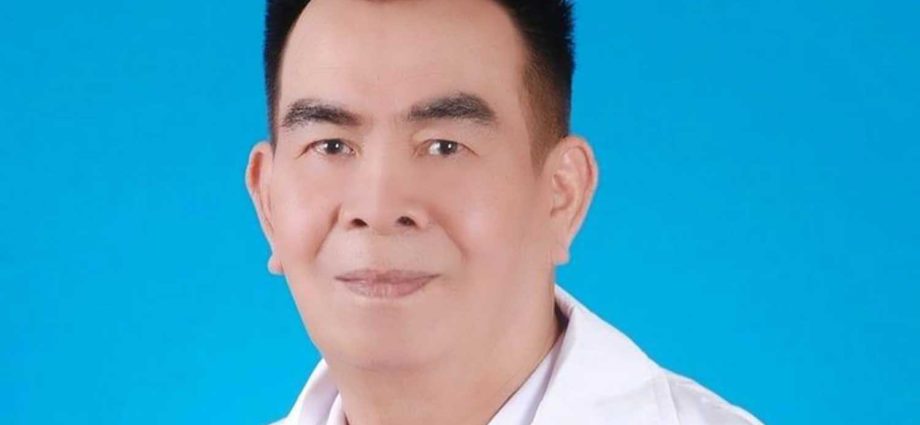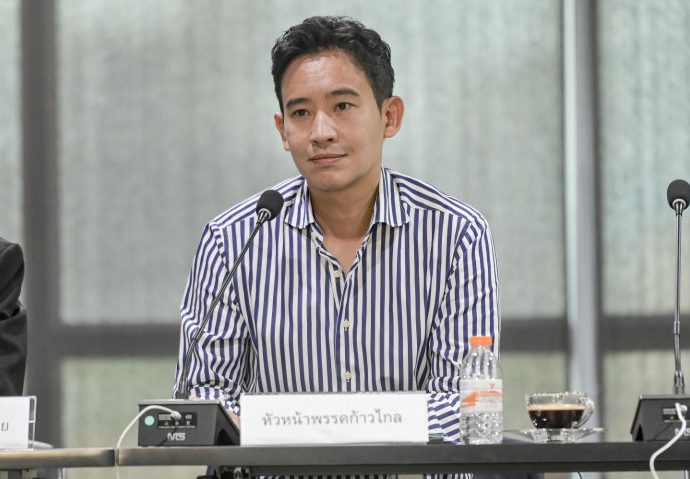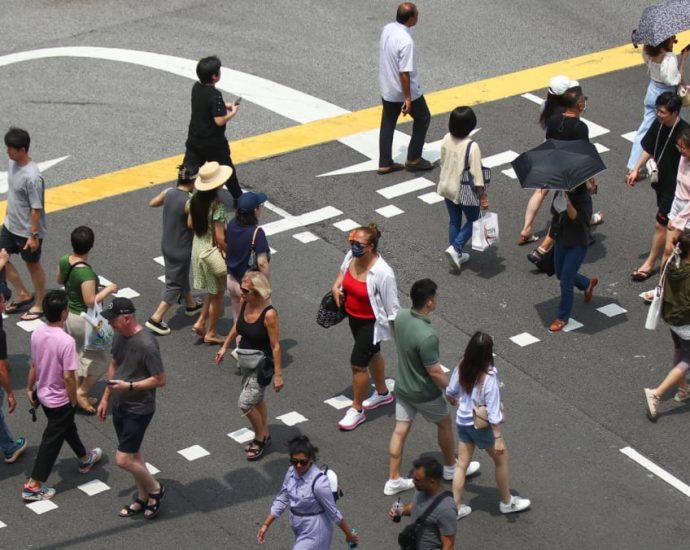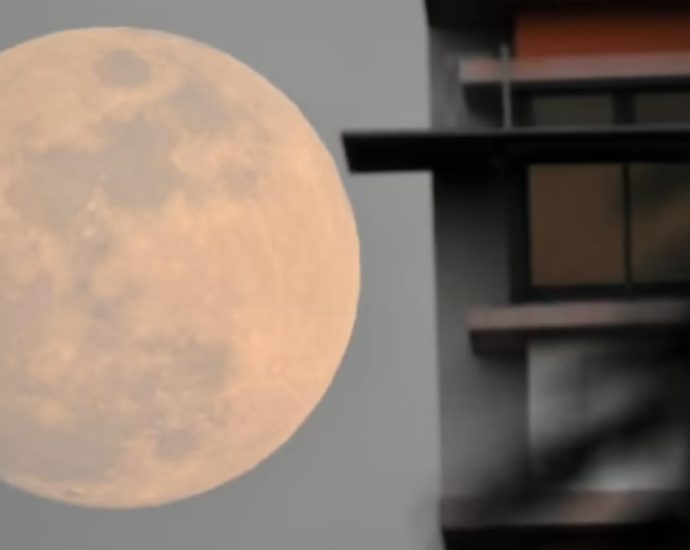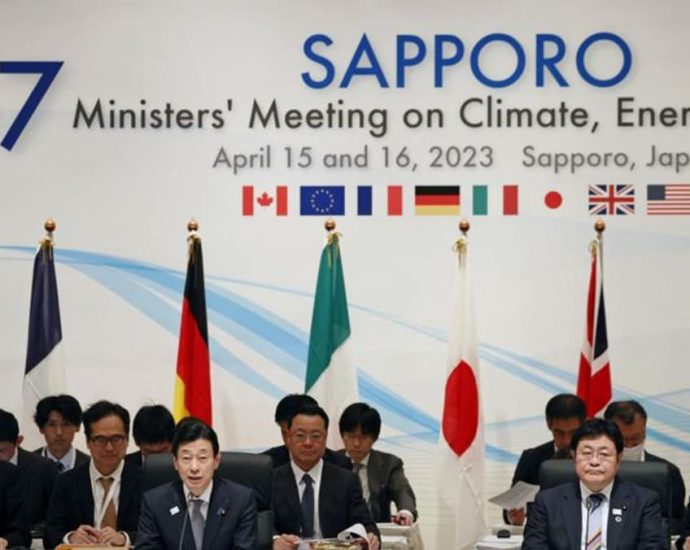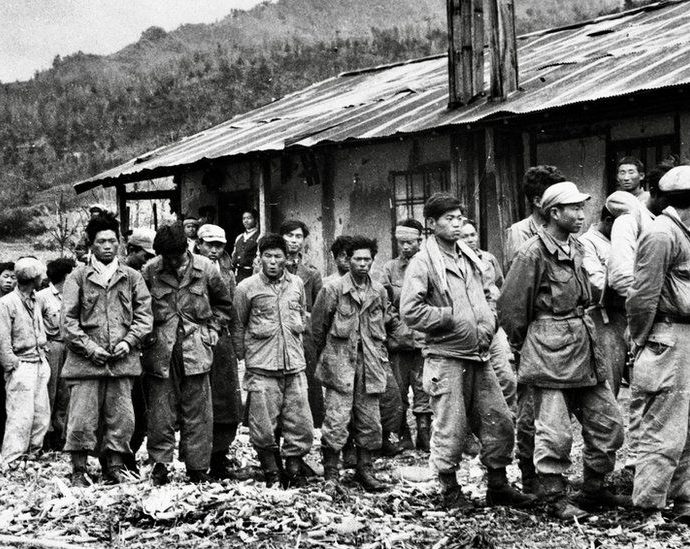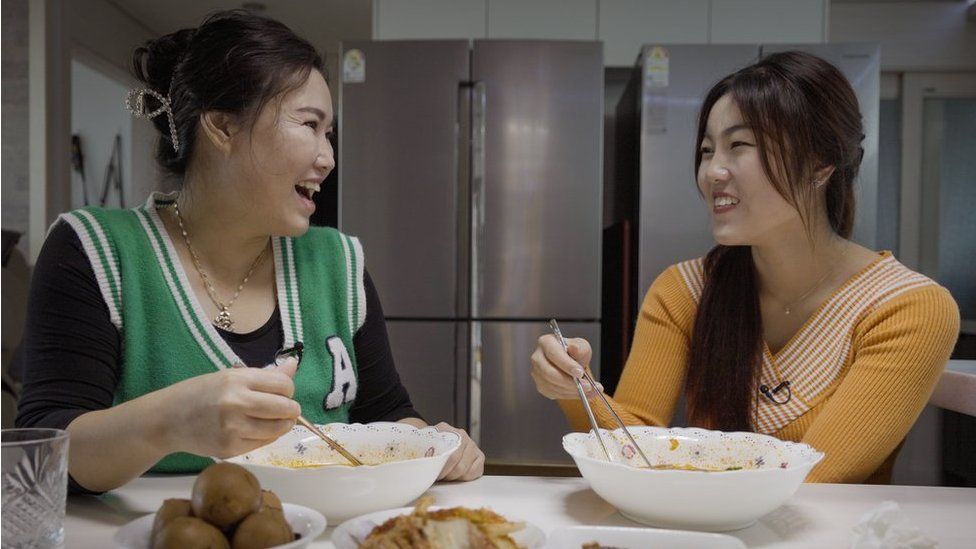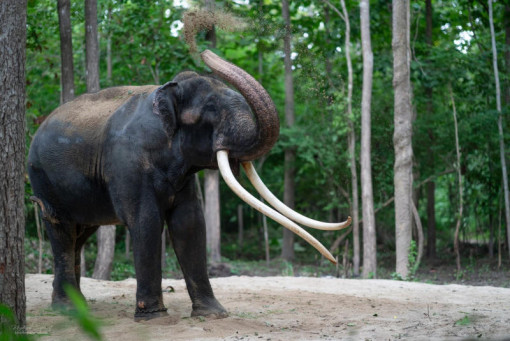Coalition pact may need review: PSM
PUBLISHED : 27 Jul 2023 at 06:04
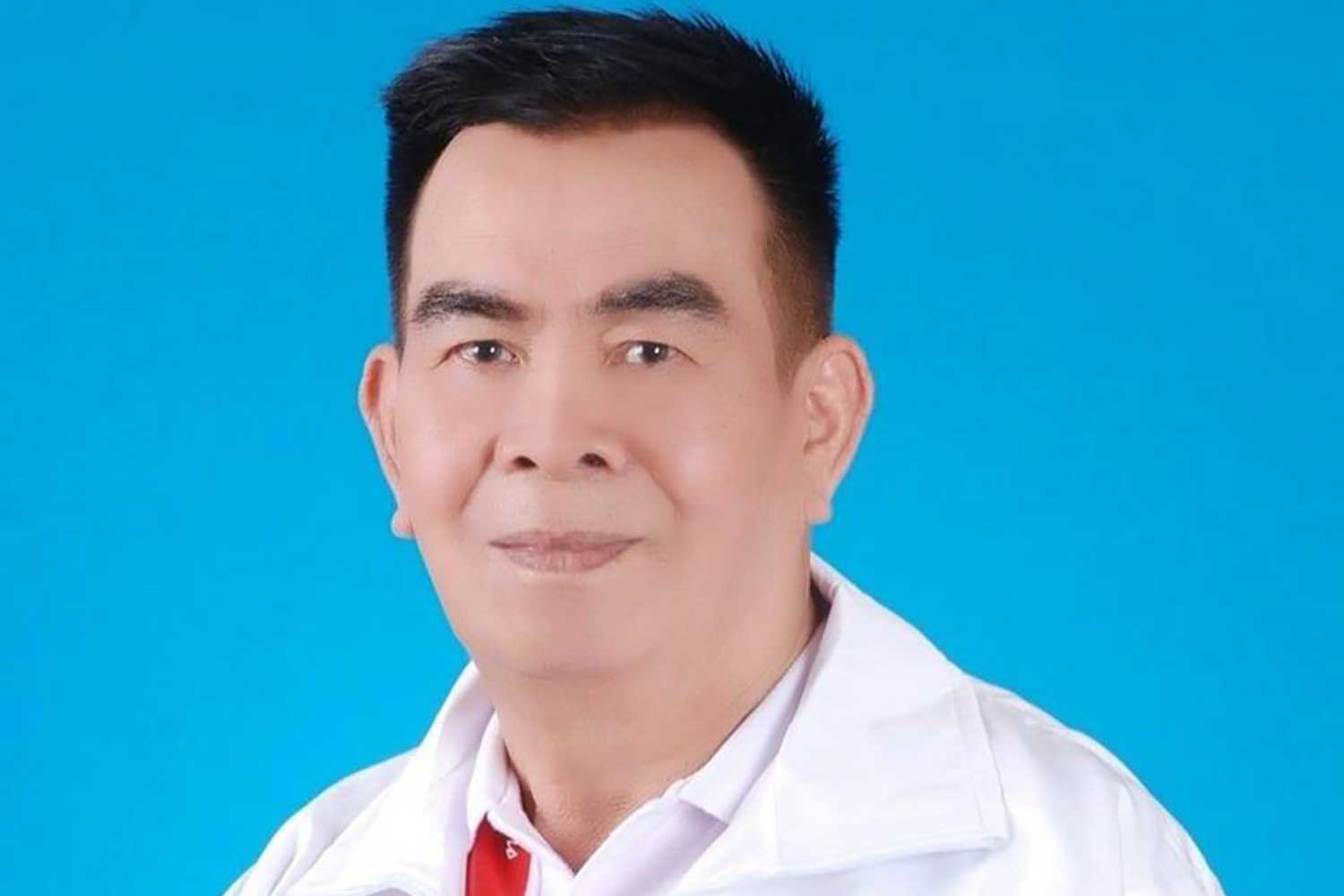
Pheu Thai should amend the memorandum of understanding (MoU) the eight-bloc coalition signed upon agreeing to support the Move Forward Party (MFP) in its bid to lead the new government, according to Plung Sungkom Mai (PSM).
PSM is one of the eight parties in the political alliance formerly led by the MFP but which has since fallen under Pheu Thai’s stewardship.
As all 23 of the policies included in the MoU were drawn up by the MFP, and with Pheu Thai having now won the trust of all members of the alliance to assume the leading role, Pheu Thai should take this opportunity to alter it where appropriate, said Chaowarit Kachornpongkirati, a list MP and leader of the PSM.
“Since the MFP has already handed over the right to lead the formation of the new government to Pheu Thai, the old MoU is no longer valid,” he said.
Pheu Thai may require changes so that it can include more parties in the bloc in a fresh attempt to win the parliamentary vote to select a new prime minister, he said.
Mr Chaowarit said he would submit the proposal at the alliance’s next meeting.
He declined to comment on which parties should be included in the alliance, saying that decision would lie with the bloc’s leader.
Meanwhile, Pheu Thai secretary-general Prasert Chantararuangthong said the MoU may have to be amended to bring it more in line with the party’s views.
The first point in the MoU, which states that all members of the alliance are committed to supporting MFP leader Pita Limjaroenrat to become Thailand’s next prime minister, for instance, might have to be changed as it appears unlikely Mr Pita still has a chance of becoming the premier, Mr Prasert said.
Any proposed changes, however, would have to be first discussed among all eight parties first and approved at a formal meeting, he added.
As for the MFP’s intention to ask parliament to revise its resolution on July 19 to reject the MFP’s resubmission of Mr Pita for a second parliamentary vote to select the prime minister, Mr Prasert said he would have to study in detail the MFP’s new plan before commenting any further.
He denied rumours that Pheu Thai and the MFP now have a serious rift, saying he talked on Tuesday with MFP secretary-general Chaithawat Tulathon and Phicharn Chaowapatanawong, a deputy party leader, explaining why the planned meeting of the eight parties was called off.
Mr Prasert also denied exploiting talks with five parties in the caretaker cabinet last weekend to pressure the MFP to quit the bloc. He said at no time during those talks did the issue of Pheu Thai forming a new coalition with other partners come up.
Pita petition decision on Aug 3
PUBLISHED : 27 Jul 2023 at 05:56

The Constitutional Court will consider next Thursday whether it will accept for deliberation a petition regarding the renomination of Move Forward Party (MFP) leader Pita Limjaroenrat as prime minister, a source said.
The Ombudsman early this week asked the court to rule on Mr Pita’s renomination rejection and to order parliament to postpone the next prime ministerial vote.
According to the Ombudsman, several complaints from both the public and members of parliament were lodged with the Office of the Ombudsman after the joint sitting of MPs and senators rejected Mr Pita’s renomination last week.
They claimed the rejection contravened the charter, and the Ombudsman decided to seek a judicial review and ask the court to postpone the prime ministerial vote to prevent any damage that would be difficult to fix.
However, another vote originally scheduled to take place today was postponed by parliament president Wan Muhamad Noor Matha pending the court’s ruling.
Mr Wan said on Wednesday his decision to postpone the vote had nothing to do with Pheu Thai’s attempt to secure support in parliament for one of its three prime ministerial candidates.
He said selecting the prime minister should wait because the Ombudsman was seeking the judicial review, and he would call a new joint session if the Constitutional Court rejected the petition for deliberation.
“It is speculated the court may decide whether to pass a ruling on the petition on Aug 9. If the court throws out the petition, I can schedule a meeting [to elect a prime minister] immediately,” Mr Wan said.
“But parliament must be informed three days in advance,” he said.
Mr Wan voiced disagreement with some MFP MPs who planned to ask parliament to review its resolution on Mr Pita’s renomination, saying the issue should wait for the court’s decision.
Democrat Party list-MP Chuan Leekpai said on Wednesday the prime ministerial selection is likely to be completed well before the five-year term of the military-appointed senators expires.
He was responding to a question about a call from some minor parties in the MFP-led alliance that it should wait for the Senate’s term to end next May, so the prime ministerial candidate could be elected by the House of Representatives alone.
5 agencies team up to fight scams

PUBLISHED : 27 Jul 2023 at 05:17
Five state agencies are joining forces to suppress illegal financial transactions and money laundering along the nation’s borders, deputy government spokeswoman Traisuree Taisaranakul said on Wednesday.
The five agencies are the Royal Thai Police (RTP), the Revenue Department, the Securities and Exchange Commission (SEC), the Anti-Money Laundering Office (Amlo) and the Bank of Thailand (BoT).
Ms Traisuree said the RTP reported on progress made in cooperation with the other agencies in carrying out the task under the policy of Prime Minister Prayut Chan-o-cha to suppress and prevent all forms of scams, including those made by call centre gangs and suppress transaction routes operating from border areas.
The agencies agreed the criminals are using illegal digital asset platforms to make peer-to-peer transactions while doing business and exchanging currencies along the nation’s borders. This channel can be used for money laundering and transferring money earned from illegal activities to foreign countries.
The RTP has been working with the agencies to set guidelines to suppress the illegal digital asset trade along the border and assigned tasks to each agency to combat such illegal activities.
Ms Traisuree said the RTP has created a database of digital asset business operators and currency exchange operators in the border areas. The database has proven useful in expanding the investigation and is accessible by Amlo as it moves to prosecute offenders under the Anti-Corruption Act, she said.
Amlo has checked suspicious transaction routes assigned by the RTP to find related bank accounts and digital assets to suppress or freeze money trails. It is also considering reviewing some laws so they can be more effectively enforced, she said.
Meanwhile, the Revenue Department has been checking tax payments made by business operators to see if they were using illegal digital asset platforms, for which the RTP database has proven useful. The BoT has okayed commercial banks to investigate and monitor any financial transactions to foreign countries originating from areas where illegal transactions are often detected.
Commentary: Assumptions about language and identity may not just be wrong, they can be hurtful
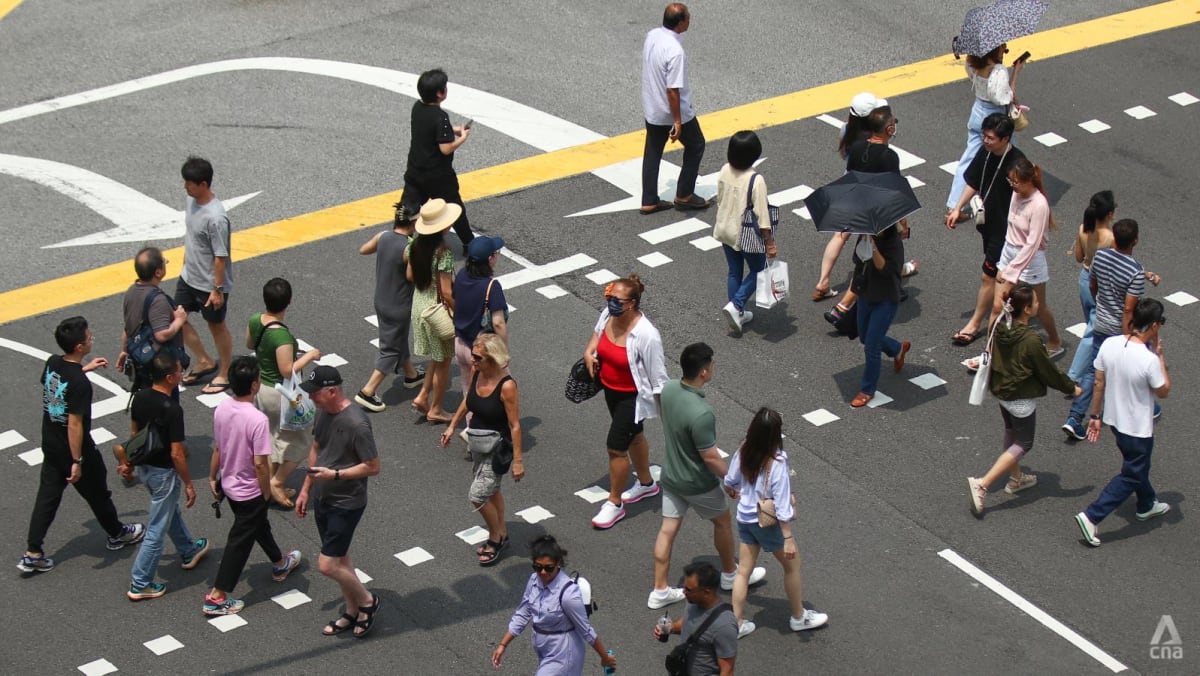
SINGAPORE: Whenever my family makes plans to eat at a Chinese restaurant, I brace myself for the dreaded task of making a reservation in Mandarin.
Rightly or wrongly, I assume that speaking English will result in difficulties. So, firstly I have to look up the word for “reservation” in Chinese, because I can never remember. Then I rehearse my lines aloud.
I take a few deep breaths before dialling. When a staff member picks up – sometimes sounding very irritated – I panic and my Mandarin comes out in a garble.
The long pause that follows makes me die a little inside. Then the killer blow: “Huh? Shuo shen me? (What did you say?)”
I weigh my options: Do I make another attempt to speak Chinese, or abort and ask for an English-speaking server?
If your Mandarin is as bad as mine – or if you can’t speak it at all – you can probably relate. Recent incidents that went viral in Singapore have highlighted the intricacies of language in our multicultural society, sparking spirited discussions on English proficiency as a marker of social integration and whether English should be the main language used in public.
A Malay delivery rider shared on TikTok in March that he was late on an order because he couldn’t locate the food stall – it had Chinese-only signage that he could not read.
A week before that incident, a customer took to social media to complain about an NTUC FairPrice employee not speaking English, arguing that the Mandarin-speaking employee should not be in a customer-facing role.
Two supermoons, meteor showers to be visible over Singapore
METEOR SHOWERS Astronomy lovers will also be in for a treat in coming weeks, with the Delta Aquariids and Perseid meteor showers making an appearance in Singapore. Meteors come from leftover comet particles and bits from broken asteroids, according to the United States’ National Aeronautics and Space Administration (NASA). “Every year theContinue Reading
Commentary: ASEAN shouldnât have high expectations of new G7 climate club
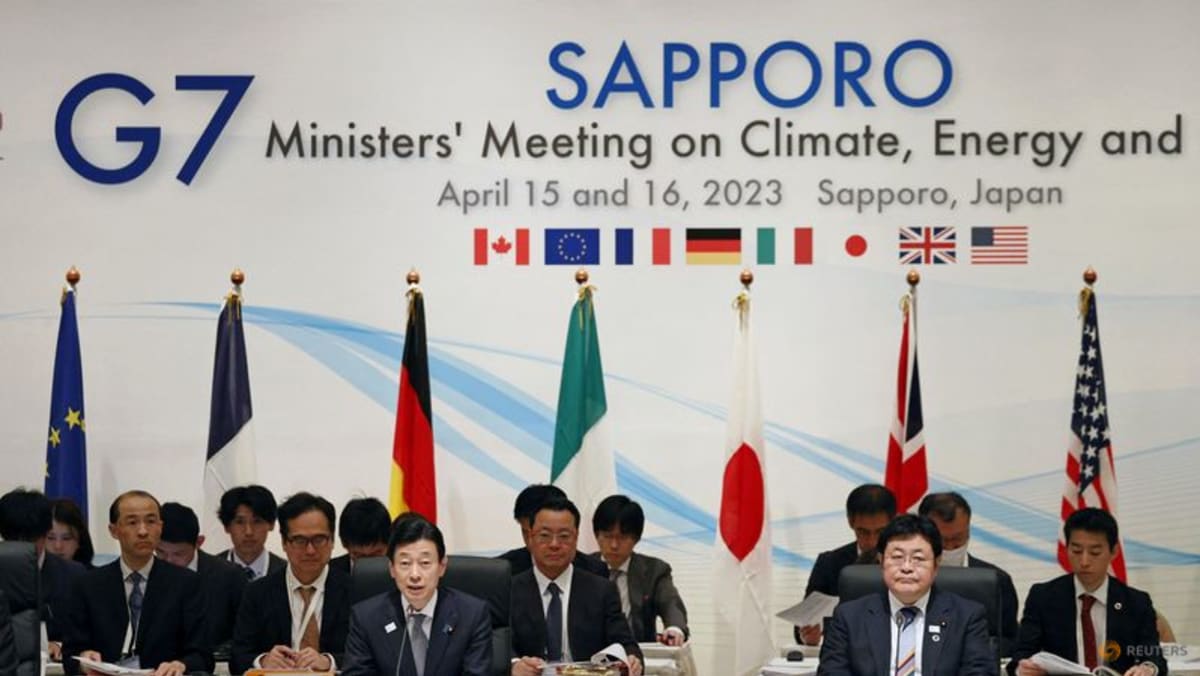
However, such voluntary clubs are often open to the free-riding problem mentioned above, making them less effective as climate governance mechanisms.
AMBIGUOUS ON MITIGATING FREE-RIDER CHALLENGE
It is unclear under which category of climate club the G7 initiative will fall into. The media release promotes this climate club as one that is “open, cooperative and inclusive” which will seek the participation of all major emitters, including developing countries.
Yet this does not explain how the G7’s initiative will mitigate the tricky free-rider challenge. One study by the Center for Climate and Energy Solutions (formerly the Pew Center on Global Climate Change), suggests that if the G7 climate club is too exclusive then it will alienate developing countries. On the other hand, if membership requirements are too lax, there will be no progress in global mitigation.
It is likely that as the G7 climate club takes shape, more defined membership requirements around environmental performance may develop. If one of the membership benefits is the provision of access to G7 markets, this may have important economic consequences for ASEAN.
Members of the G7 are some of the largest export markets for Indonesia, Thailand, Vietnam and other regional countries. The risk of losing access to export markets may encourage environmental action at the national level but it can also result in trade disputes such as the recent palm oil conflict between the EU versus Malaysia and Indonesia.
Overly stringent membership criteria may inadvertently drive ASEAN governments closer to less-regulated markets such as China, Russia and India, which are unlikely to demand that their trade partners follow similarly rigorous environmental standards.
Semiconductors: Can India become a global chip powerhouse?
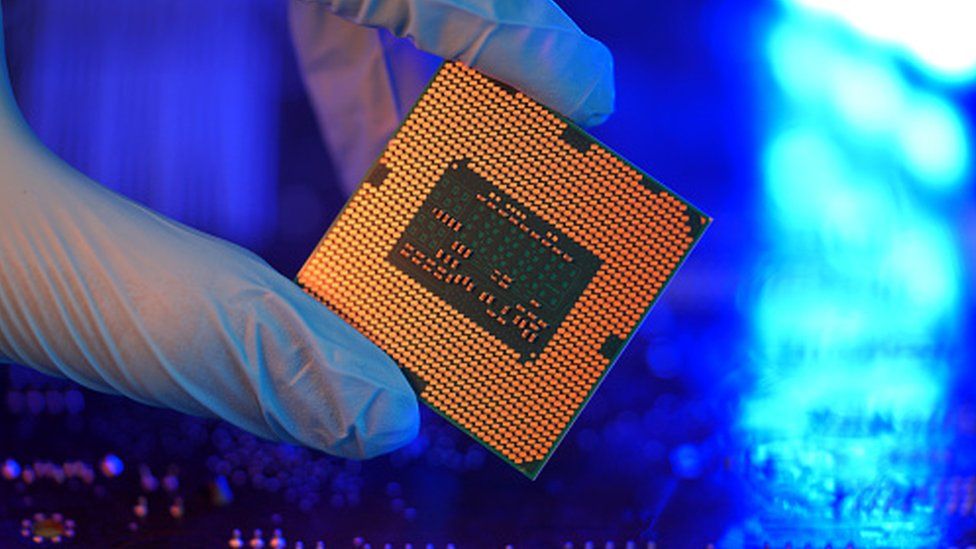 Getty Images
Getty ImagesIt has been a year-and-a-half since India announced incentives to power up a homegrown semiconductor manufacturing industry and launched a national mission, but progress has been slapdash.
Days after US major Micron announced it would invest nearly $3bn (£2.3bn) in an assembly and test facility in the western state of Gujarat, Taiwanese tech giant Foxconn withdrew from its $19.5bn joint venture with India’s Vedanta to build a chip-making plant in the country.
Plans of at least two other companies appear to have been stalled, local media say.
But as Mr Modi’s government waits for high-value investments from chipmakers to match a $10bn incentives outlay, it has been inking a bunch of technology partnerships to get the industry on a firmer footing.
Following an agreement with the US on Critical and Emerging Technology (iCET) to enhance bilateral collaboration on semiconductor supply chains, India signed a similar memorandum of understanding with Japan last week.
Separately, at least three Indian states have announced individual policies aiming to secure investments in this sphere.
While generous subsidies and a strong policy push have created a springboard for the sector to take off, time is of the essence and transfer of technology will be key to India’s emergence as a manufacturing hub, says Konark Bhandari, a fellow at Carnegie India.
“Whether companies commit to bringing these technologies will hinge upon an agglomeration of multiple factors, such as business climate, domestic market, export potential, infrastructure and talent,” he says.
As things stand, only parts of this puzzle appear to have fallen into place.
India advantage
Semiconductors power every aspect of modern, digital life – from tiny smartphones to mega data centres that control the internet.
Advanced semiconductor technologies also play a key role in the auto industry’s transition to climate-friendly electric vehicles and the development of AI applications.
India makes up 5% of the global demand for chips. That’s likely to double by 2026, according to Deloitte, driven by greater adoption of smartphones, consumer appliances and new trends like self-driving cars.

The domestic market is evidently thriving. But across key phases of the chip production value chain – product development, design, fabrication, ATP (assembly, test and packaging) and support – India has a strong presence only in the design function and will have to start from scratch when it comes to manufacturing.
“India houses 20% of the global talent in chip design. There are 50,000 Indians doing this work,” Kathir Thandavaryan, a partner at Deloitte, told the BBC.
Most semiconductor manufacturers – including Intel, AMD and Qualcomm – also have their largest research and development centres in India, leveraging local engineering talent.
Getting trained personnel, however, could become a major headwind for companies, according to Deloitte, with an estimated quarter million people required to work across the value chain when investments start flowing in.
Greater industry-academia collaborations in this area will, therefore, be crucial.
To its credit, the government has been working towards enabling this by training 85,000 engineers, for instance, through its ‘Chips to Startup’ scheme.
A number of other factors too – such as an improvement in global rankings on logistics, infrastructure and efficiency, and a more stable electricity grid, a critical prerequisite for semiconductor manufacturing – have fortified India’s preparedness to be part of this global race, experts say.
Geopolitics also seems to be in India’s favour, with increased focus in the US to seek alternative locations to China to outsource parts of its own semiconductor supply chain.
India, as an increasingly close ally, can become a viable “friend shoring” destination for US companies seeking to outsource support functions, according to Mr Thandavaryan.
But its protectionist trade policy, particularly its absence in multilateral trade pacts like RCEP (Regional Comprehensive Economic Partnership), could prove costly.
“If semiconductor companies based out of China were to diversify, they would be unlikely to face major changes to the tariff scheme applicable to their components if they were moved to Vietnam. This is because there is likely to be more uniformity among countries that are part of the same regional trade arrangement,” says Mr Bhandari.
Stumbling blocks
New Delhi’s single biggest challenge to positioning itself as a global option for chip makers, however, is one that’s all too familiar to manufacturers across industries – a notoriously difficult ‘doing business’ environment.
The country, known for its software prowess, doesn’t really have hardware capabilities. The manufacturing sector’s share of GDP has remained stagnant for years because of the lack of a facilitating ecosystem.
India will need to undertake “fundamental and enduring reforms” to change this and make its semiconductors mission a success, say experts.
“That entails addressing investment barriers such as customs/tariffs, taxation, and infrastructure,” Stephen Ezell, vice president for global innovation policy at the US-based Information Technology and Innovation Foundation, told the BBC.
“India’s not going to be able to compete in the long-run with competitors such as China, the European Union, or the US if incentives are its first-order strategy to attract semiconductor ATP or fabs.”
That’s primarily because India’s semiconductors incentives policy is just one among several in the world. The subsidies simultaneously being offered by blocs like the EU or the US are far larger.

Most companies will also not relocate their operations at the drop of a hat for subsidies “because they have an existing ecosystem of suppliers, partners, consumers, a logistics network – all of which make it difficult to offshore operations to other jurisdictions”, says Mr Bhandari.
India’s subsidies could also be better directed, say experts.
Right now, it offers them across all ends of the chip-making value chain. Instead, the country could play to its strengths.
For example, it can invest in training schools for engineers or double down on its competitiveness in semiconductor ATP and design support rather than on the actual fabrication of chips, which is hugely capital-intensive and has long gestation periods.
The government mustn’t get locked in a “shiny-object syndrome” of focusing on fabrication, warns Mr Ezell.
However, being competitive in it would mark a “major technological leap for the country” and the government is right to try and seek more investment in this category, he adds.
Not having some domestic fabrication facilities would also have “serious implications for India’s import costs”, says Mr Bhandari, as domestic electronics production crosses the significant $100bn mark.
High-stakes gamble
Much is clearly at stake with India’s semiconductor gamble. It has had several false starts in the past. But after years of delays, a dedicated policy that broadly gets it right is just the first step in the right direction.
This is a “fresh opportunity to correct the earlier misses,” says Mr Bhandari. “The geopolitical stars have aligned to aid this opportunity. In a fractious world with fragmented supply chains, India finds itself at a crossroads – it can either undertake a serious attempt at nurturing hardware manufacturing or let yet another opportunity slip.”
BBC News India is now on YouTube. Click here to subscribe and watch our documentaries, explainers and features.

Read more India stories from the BBC:

Related Topics
Manipur: Misleading information shared about India tensions
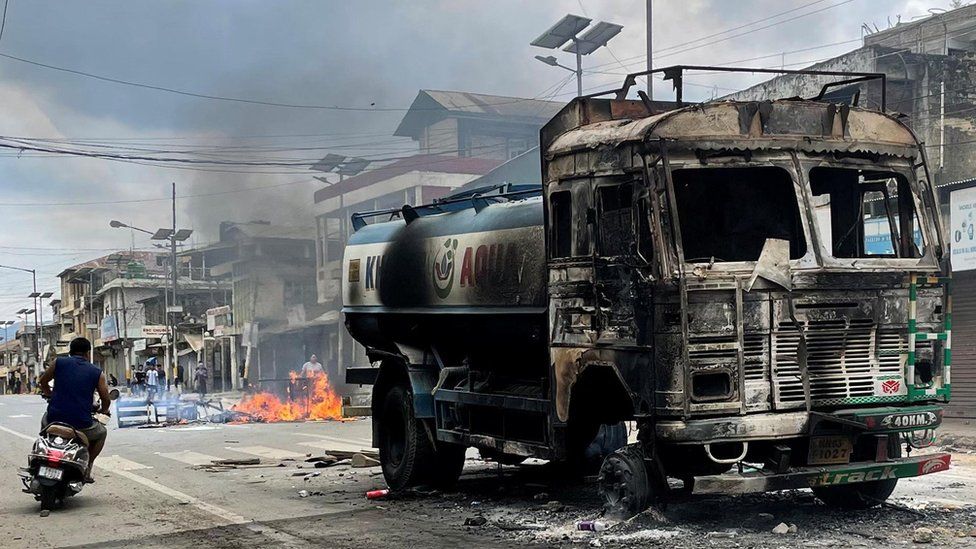 Reuters
ReutersMisinformation has been widely shared in the violence-hit state of Manipur in north-east India, despite attempts by authorities to quash it by restricting internet access.
The conflict between the majority Meitei community and the tribal Kuki minority recently made global headlines after a video of a mob of men assaulting and stripping two women went viral, sparking outrage in India and beyond.
Warning: This article contains details some readers may find distressing
False claims about sexual violence
Attacks on women have been a particular source of false and misleading claims, dating back to the upsurge in violence in Manipur in early May.
The authorities shut down mobile internet services as soon as clashes began on 3 May to stop the spread of “disinformation and false rumours, through various social media platforms”.
A day later that was extended to include all internet services in the state.

But by then a graphic image of the body of a woman, wrapped in a plastic bag, incorrectly said to be a Meitei nurse who was raped and murdered by Kuki men, was already circulating.
Not only had the image appeared on social media, we have seen evidence of it also being shared on WhatsApp in the district of Churachandpur where clashes broke out on 3 May.
The claims surrounding the image are false because it not from Manipur at all. It is a photo of Aayushi Chaudhary, a 21-year-old woman who was killed in Delhi in November last year. Similarly, a false claim emerged on 5 May on social media that the bodies of 37 Meitei women, who had been raped and killed, and the body of a seven-year-old Meitei child, were at the Shija hospital in Manipur’s capital Imphal, awaiting post-mortems.
On Twitter, a number of posts repeated this claim, with almost identical wording. The posts were shared by newly-created accounts.
The BBC has also seen identically-worded text messages circulated in the local Manipuri language, as pictured in the example below. We’ve been told by journalists working in Manipur that, despite the mobile shutdown, it was still possible to communicate via text message.

The claim is false.
The Shija hospital told the BBC it never happened, and that – as a private medical institution – they are not authorised to carry out post-mortems.
Myanmar not Manipur
There are other examples of false and misleading content, including a highly-graphic video of the assault and killing of a woman on a road, said to be in Manipur.
In late June, this video began to be shared with the hashtag #Manipur, and received thousands of views – with some claiming it showed the killing of a Kuki woman by armed men, presumed to be from the Meitei community.
It resurfaced a week ago, with the same claim, amid declarations that it took place in Manipur.
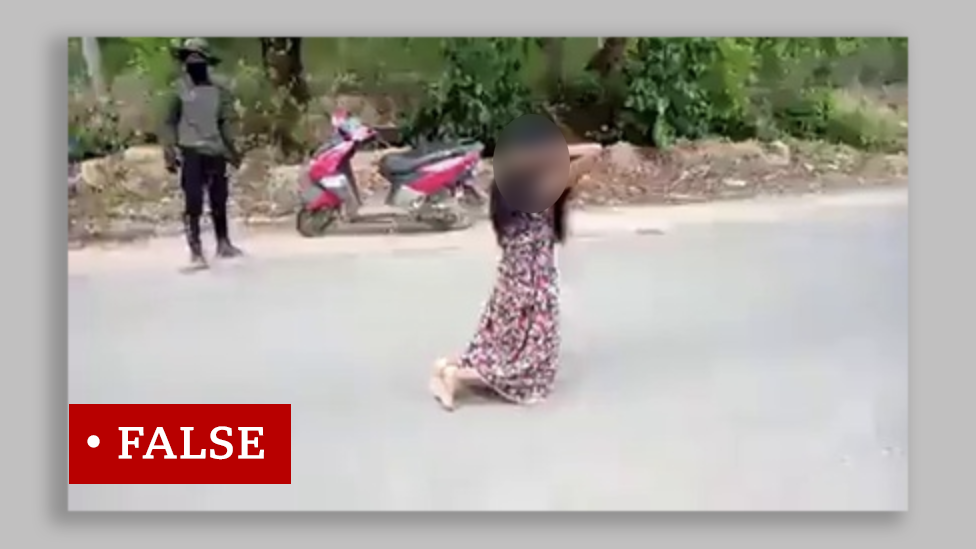
Once again the claims are false.
The video is not from Manipur, and the victim is not a Kuki woman.
It is from neighbouring Myanmar and the incident happened in June 2022 – well before the Manipur clashes began – and has been debunked by an Indian fact-checking site.
We can’t be sure how widely this video was shared, but it was circulating within Manipur because the state police warned publicly that action would be taken against anyone sharing it.
Wrong information about arrest
Misinformation has continued, even after the Manipur violence hit the headlines on 19 July – when the video emerged of the mob attack on two women from the Kuki community, from early May.
The following day, claims spread that a Muslim man had been arrested for his alleged involvement – those sharing this included a politician from India’s ruling BJP party, Tejinder Pall Singh Bagga.

Mr Bagga’s tweet had more than a million views, and thousands of re-tweets, and referred to the man as the “main accused of [the] Manipur case” – with ‘the Manipur case’ widely understood to refer to the attack on the two women.
But this was misleading as, although Manipur police did arrest a Muslim man that day, it was for something completely different.
The police have made clear the arrests took place in different locations; they did not link the Muslim man with the assault on the women.
The news agency, ANI, which also incorrectly reported the arrest of this man in connection with the mob attack later corrected itself, blaming their mistake on the “erroneous reading of tweets” from the police.
The BBC is not responsible for the content of external sites.
Allow Twitter content?
This article contains content provided by Twitter. We ask for your permission before anything is loaded, as they may be using cookies and other technologies. You may want to read Twitter’s cookie policy and privacy policy before accepting. To view this content choose ‘accept and continue’.
The BBC is not responsible for the content of external sites.
However, Mr Bagga, from the BJP, has so far neither corrected nor clarified his original tweet, nor has he responded to questions about it from the BBC.
Additional research by Ahmed Nour


Related Topics
South Korean POWs abandoned for decades in North Korea
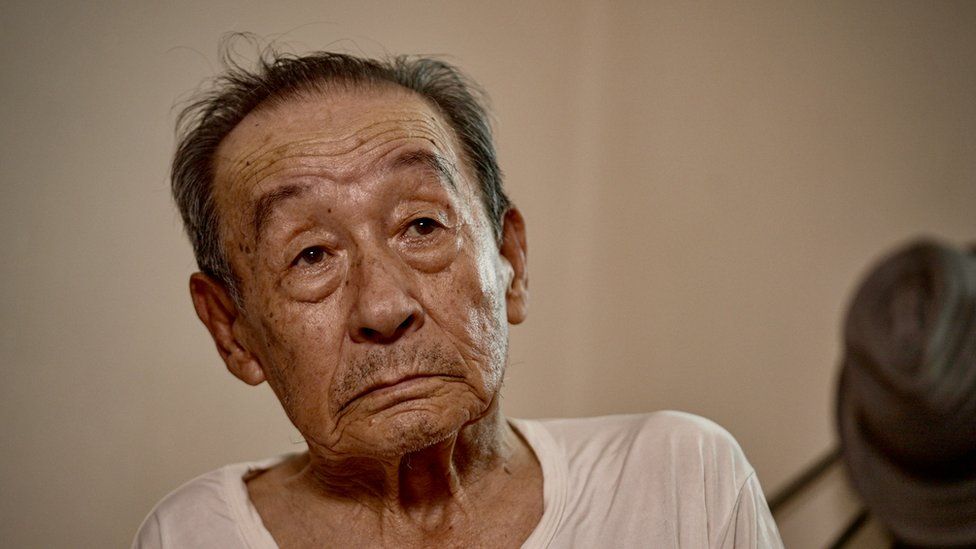
At the age of 92, Lee Dae-bong doesn’t particularly enjoy getting out of bed. He has lived enough of a life. As he readjusts his pyjamas, his left hand reveals three missing fingers.
His injury is not the result of the war he fought, but the subsequent 54 years he was forced to toil in a North Korean coal mine.
The former South Korean soldier was captured during the Korean War by Chinese troops, who were fighting alongside North Korea. It was 28 June 1953; the first day of the battle of Arrowhead Hill, and less than a month before the armistice brought an end to three brutal years of fighting.
All, bar three of his platoon, were killed that day. As he and the two other survivors were loaded onto a cargo train, he assumed they were heading home to South Korea, but the train veered North, to the Aoji coal mine, where he would spend most of his life. His family was told he had been killed in combat.
Between 50,000 and 80,000 South Korean soldiers were held captive in North Korea after the Korean War ended with an armistice agreement that divided the peninsula.
A peace treaty never followed, and the prisoners have never been returned. Mr Lee was one of the very few who managed to plot his own escape.
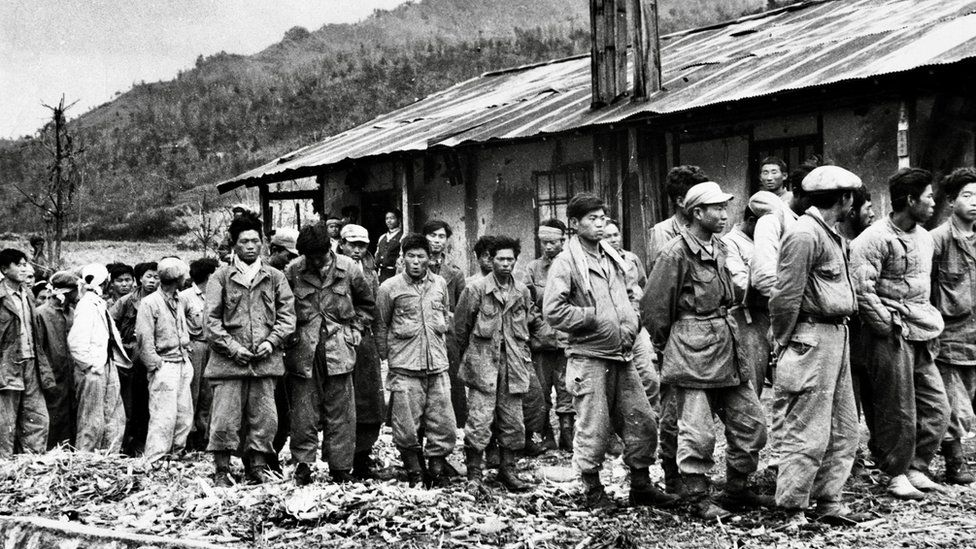
Over the decades, despite some skirmishes, the armistice has largely held, making this the longest ceasefire in history.
But the absence of peace has wrought havoc on Mr Lee’s life, along with his fellow prisoners and their families. As North and South Korea mark 70 years since the signing of the agreement, their stories are a reminder the Korean War is not over.
For the first years of his captivity Mr Lee was forced to work a week in the coal mine followed by a week studying North Korean ideology, until, in 1956, he and the other prisoners were stripped of their military titles and told to marry and assimilate into society.
But they, and their new families, were designated as outcasts and placed at the very bottom of North Korea’s strict social caste system.
Digging for coal, day after day, for more than 50 years was excruciating work, but it was the spectre of injury and death that Mr Lee says was the hardest to bear.
One day his hand got caught in a coal processing machine, but the loss of his fingers seemed minor, as he witnessed various friends be killed in a series of methane gas explosions.
“We gave our entire youths to that coal mine, waiting for and fearing a meaningless death at any moment,” he says. “I missed home so much, especially my family. Even animals, when they are nearing death, go back to their caves.”

As North and South Korea mark the prevailing peace on the peninsula, many of the prisoners of war and their families blame both sides for their suffering.
Various South Korean presidents have met North Korean leaders, but securing their return was low on the agenda.
The North, after releasing just 8,000 prisoners, has refused to acknowledge that any more exist.
At a summit in 2000 between the then-South Korean president, Kim Dae-jung, and the North Korean leader, Kim Jong-il, the issue was not even mentioned.
This is the moment Lee Dae-bong says he lost all hope, realising the only way he would ever be coming home was if he were to escape.
Three days after his only son was killed in a mine accident, with his wife long dead, Mr Lee embarked on his journey. Now aged 77, he secretly waded across the river into China, the water up to his neck.
He is one of 80 prisoners to have escaped and made it home to South Korea, with only 13 of the escapees still alive. The remaining tens of thousands of prisoners were left to perish in the mines. Few, if any, are still alive – though their children remain.
.sc-bdVaJa {} .rPqeC{overflow:hidden;display:-webkit-box;display:-webkit-flex;display:-ms-flexbox;display:flex;background-color:#F2EFEC;-webkit-flex-direction:row;-ms-flex-direction:row;flex-direction:row;-webkit-flex-wrap:wrap;-ms-flex-wrap:wrap;flex-wrap:wrap;box-sizing:border-box;}
/* sc-component-id: sc-bwzfXH */
.sc-bwzfXH {} .gvActO{width:100%;height:100%;object-fit:cover;object-position:50% 50%;position:absolute;background-size:cover;background-position-x:50%;background-position-y:50%;background-image:url(‘https://c.files.bbci.co.uk/assets/92ca80b3-eb97-434e-9e53-6ab722d79d99’);}
/* sc-component-id: sc-htpNat */
.sc-htpNat {} .kUePcj{max-width:743px;width:45%;position:relative;min-height:200px;-webkit-flex:1 1 auto;-ms-flex:1 1 auto;flex:1 1 auto;}
/* sc-component-id: sc-bxivhb */
.sc-bxivhb {} .huvKBR{max-width:100%;position:absolute;bottom:0;right:0;color:#ffffff;background:#000000;opacity:0.7;font-family:Helvetica,Arial,sans-serif;padding:5px;word-wrap:break-word;} @media (max-width:599px){.huvKBR{font-size:12px;line-height:16px;}} @media (min-width:600px) and (max-width:1007px){.huvKBR{font-size:13px;line-height:16px;}} @media (min-width:1008px){.huvKBR{font-size:12px;line-height:16px;}}
/* sc-component-id: sc-gzVnrw */
.sc-gzVnrw {} .blLFIH{width:45% !important;position:relative;margin:0;word-wrap:break-word;color:#404040;font-weight:300;-webkit-flex:1 0 auto;-ms-flex:1 0 auto;flex:1 0 auto;padding:16px;}
/* sc-component-id: sc-htoDjs */
.sc-htoDjs {} .kGbKV{display:block;}
/* sc-component-id: sc-dnqmqq */
.sc-dnqmqq {} .dHUwnI{font-weight:100;font-family:Helvetica,Arial,sans-serif;padding:11px 0 25px 0;} .dHUwnI p{margin:0;} @media (max-width:599px){.dHUwnI{font-size:18px;line-height:22px;}} @media (min-width:600px) and (max-width:1007px){.dHUwnI{font-size:21px;line-height:24px;}} @media (min-width:1008px){.dHUwnI{font-size:20px;line-height:24px;}}
/* sc-component-id: sc-iwsKbI */
.sc-iwsKbI {} .jiPRqw{display:block;}
/* sc-component-id: sc-gZMcBi */
.sc-gZMcBi {} .honXkL{padding-top:10px;font-family:Helvetica,Arial,sans-serif;}
/* sc-component-id: sc-gqjmRU */
.sc-gqjmRU {} .klLnaG{color:#404040;font-style:normal;font-family:Helvetica,Arial,sans-serif;} .klLnaG > strong{font-weight:bold;} @media (max-width:599px){.klLnaG{font-size:16px;line-height:20px;}} @media (min-width:600px) and (max-width:1007px){.klLnaG{font-size:18px;line-height:22px;}} @media (min-width:1008px){.klLnaG{font-size:16px;line-height:20px;}} @font-face { font-family: ‘ReithSans’; font-display: swap; src: url(https://c.files.bbci.co.uk/graphics/static/media/BBCReithSans_W_Rg.woff2) format(“woff2”); } @font-face { font-family: ‘ReithSans’; font-display: swap; src: url(https://c.files.bbci.co.uk/graphics/static/media/BBCReithSans_W_Bd.woff2) format(“woff2”); font-weight: bold; } @font-face { font-family: ‘BBCNassim’; font-display: swap; src: url(https://c.files.bbci.co.uk/graphics/static/media/BBC-Nassim-Regular-1-55-URD-Desktop.ttf) format(“truetype”); } @font-face { font-family: ‘BBCNassim’; font-display: swap; src: url(https://c.files.bbci.co.uk/graphics/static/media/BBC-Nassim-Bold-1-55-URD-Desktop.ttf) format(“truetype”); font-weight: bold; } @font-face { font-family: ‘Iskoola_pota_bbc’; font-display: swap; src: url(https://c.files.bbci.co.uk/graphics/static/media/iskpotaRegular.ttf) format(“truetype”); } @font-face { font-family: ‘Iskoola_pota_bbc’; font-display: swap; src: url(https://c.files.bbci.co.uk/graphics/static/media/iskpotaBold.ttf) format(“truetype”); font-weight: bold; } @font-face { font-family: ‘Latha’; font-display: swap; src: url(https://c.files.bbci.co.uk/graphics/static/media/lathaRegular.ttf) format(“truetype”); } @font-face { font-family: ‘Latha’; font-display: swap; src: url(https://c.files.bbci.co.uk/graphics/static/media/lathaBold.ttf) format(“truetype”); font-weight: bold; } @font-face { font-family: ‘Mangal’; font-display: swap; src: url(https://c.files.bbci.co.uk/graphics/static/media/mangalRegular.ttf) format(“truetype”); } @font-face { font-family: ‘Mangal’; font-display: swap; src: url(https://c.files.bbci.co.uk/graphics/static/media/mangalBold.ttf) format(“truetype”); font-weight: bold; } @font-face { font-family: ‘Noto Sans CJK KR’; font-display: swap; src: url(https://c.files.bbci.co.uk/graphics/static/media/NotoSansCJKkr-Regular.otf) format(“opentype”); } @font-face { font-family: ‘Noto Sans CJK KR’; font-display: swap; src: url(https://c.files.bbci.co.uk/graphics/static/media/NotoSansCJKkr-Bold.otf) format(“opentype”); font-weight: bold; } @font-face { font-family: ‘Noto Sans Gurmukhi’; font-display: swap; src: url(https://c.files.bbci.co.uk/graphics/static/media/NotoSansGurmukhi-Regular.ttf) format(“truetype”); } @font-face { font-family: ‘Noto Sans Gurmukhi’; font-display: swap; src: url(https://c.files.bbci.co.uk/graphics/static/media/NotoSansGurmukhi-Bold.ttf) format(“truetype”); font-weight: bold; } @font-face { font-family: ‘Padauk’; font-display: swap; src: url(https://c.files.bbci.co.uk/graphics/static/media/PadaukRegular.ttf) format(“truetype”); } @font-face { font-family: ‘Padauk’; font-display: swap; src: url(https://c.files.bbci.co.uk/graphics/static/media/PadaukBold.ttf) format(“truetype”); font-weight: bold; } @font-face { font-family: ‘Shonar_bangala’; font-display: swap; src: url(https://c.files.bbci.co.uk/graphics/static/media/ShonarRegular.ttf) format(“truetype”); } @font-face { font-family: ‘Shonar_bangala’; font-display: swap; src: url(https://c.files.bbci.co.uk/graphics/static/media/ShonarBold.ttf) format(“truetype”); font-weight: bold; } @font-face { font-family: ‘NotoSansEthiopic’; font-display: swap; src: url(https://c.files.bbci.co.uk/graphics/static/media/NotoSansEthiopic-Regular.ttf) format(“truetype”); } @font-face { font-family: ‘NotoSansEthiopic’; font-display: swap; src: url(https://c.files.bbci.co.uk/graphics/static/media/NotoSansEthiopic-Bold.ttf) format(“truetype”); font-weight: bold; } @font-face { font-family: ‘Mallanna’; font-display: swap; src: url(https://c.files.bbci.co.uk/graphics/static/media/mallanna.ttf) format(“truetype”); }
South Korea exists today thanks to people like my father, but our suffering has still not been solved.
Chae Ah-in was six years old when her father was killed in a gas explosion at a North Korean mine. Soon her older sisters were sent to work in his place.
Still at school, she was relentlessly beaten and bullied. She could not understand why her family was cursed. Only later, when she overheard her sisters whispering, did she learn her father had been a South Korean soldier.
“For a long time I hated him,” she recounts, from her home in the outskirts of Seoul, where she arrived in 2010. “I blamed him so much for making us all suffer.”
At the age of 28, Ms Chae too chose to escape her painful existence in North Korea, crossing first into China, where she lived for 10 years. It wasn’t until she arrived in South Korea that she realised her father was a hero.
“Now I respect him and try so hard to remember him,” she says. “I feel different to other North Korean defectors, because I am the proud daughter of a South Korean war veteran.”
But Ms Chae is not recognised by the South Korean government as the daughter of a veteran who gave his life for his country.
The prisoners of war (POWs) who never made it home are marked as missing, assumed dead, and are not honoured as war heroes.
“South Korea exists today thanks to people like my father, but our suffering has still not been solved,” she says, wanting them both to be recognised for who they are.
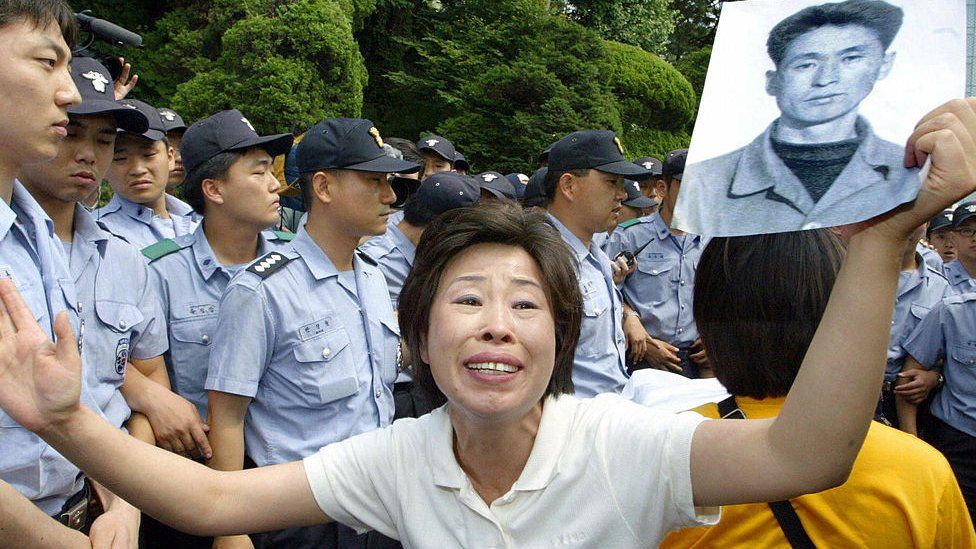
Around 280 children of POWs have managed to escape and make it to South Korea. Another is Son Myeong-hwa, chairperson of the Korean War POW Family Association, who is fighting on their behalf.
“The children of the POWs in North Korea suffered from the pain of guilt by association, and yet here in South Korea we are not acknowledged. We want to be given the same respect that the families of other fallen veterans receive,” she said.
The South Korean government told us it is not planning to change its classification of veterans.
By the time Lee Dae-bong arrived home, already an old man, his parents and brother had died. Although South Korea had changed beyond recognition, his younger sister took him to stand on the soil of his old town.
Mr Lee recalls how his dying friends in North Korea would beg their children to one day bury them in their hometowns. Their wishes have yet to be granted. And the absence of peace between North and South Korea has left these families struggling to find peace of their own.
Both Lee Dae-bong and Chae Ah-in still dream of the North and South being reunified.
Ms Chae wants to bring her father’s body to rest in South Korea.
For North and South Korea, peace and reunification is still the officially stated goal. But 70 years since the armistice, this dream feels ever more distant.
Related Topics
-
-
28 March 2022
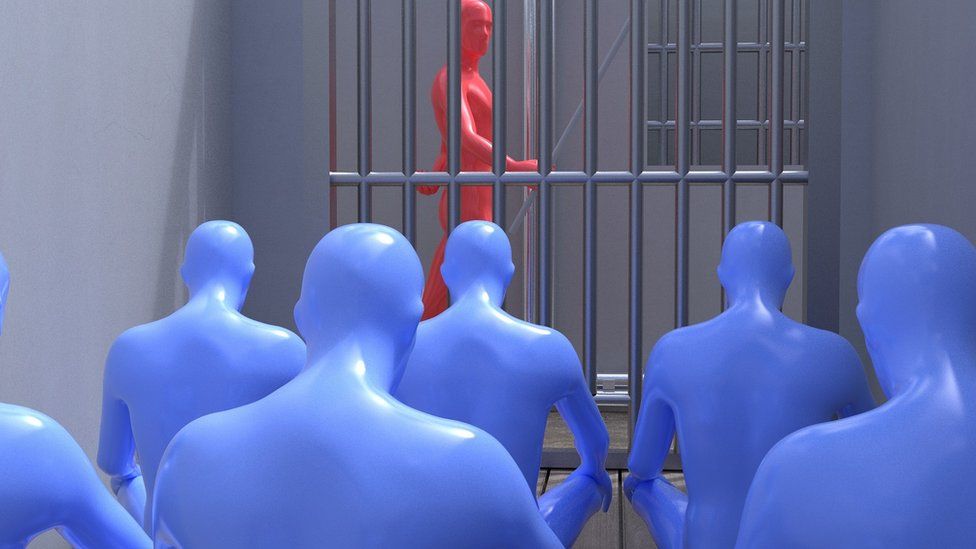
-
Sak Surin to get a welcoming ceremony
PUBLISHED : 27 Jul 2023 at 04:10

The National Resource and Environment Ministry will hold a Bai Sri Su Khwan welcoming ceremony for Thai elephant Sak Surin after his 30-day quarantine finishes, minister Varawut Silpa-archa says.
According to Mr Varawut, the ceremony will be held at the Thai Elephant Conservation Centre (TECC) in Lampang, where the 30-year-old elephant has been treated since being flown home from Sri Lanka on July 2.
The ceremony will be held once the elephant has undergone a blood test and is given a clean bill of health.
The TECC will allow the public to meet Sak Surin after the ceremony. The elephant will live with other elephants at the centre pending his full recovery, said Mr Varawut.
Sak Surin was one of three Thai elephants gifted to Sri Lanka in 2001 as goodwill ambassadors. He changed hands many times before ending up at the Kande Viharaya temple in Aluthgama, in south Sri Lanka, where he carried holy relics during annual Buddhist parades.
The tusker was allegedly abused and neglected before being taken to the National Zoological Gardens last November, according to Rally for Animal Rights and Environment (Rare), a Sri Lanka-based animal organisation.

